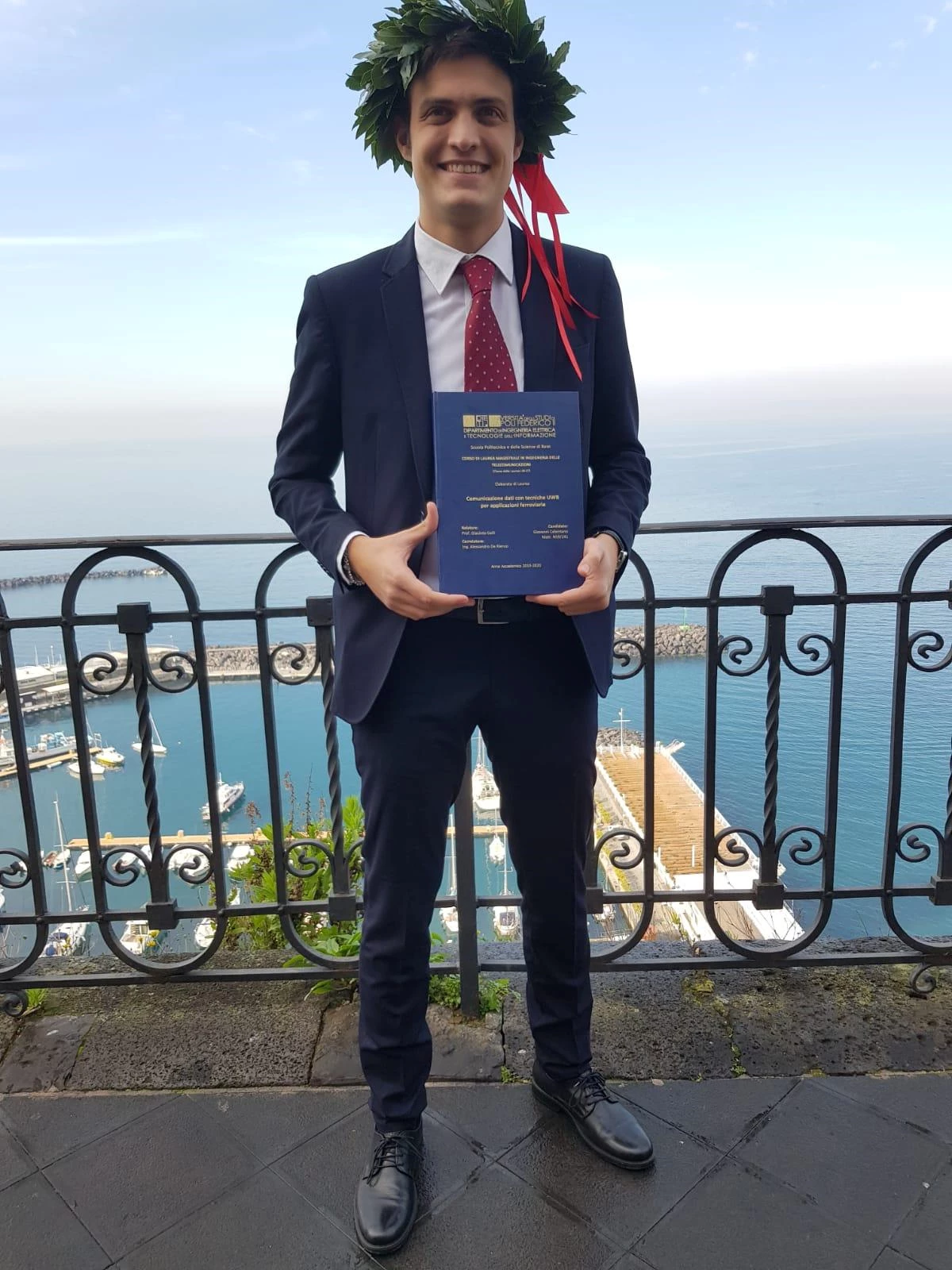Hitachi Rail partners with universities across the world, benefitting from access to cutting-edge talent and technology which is helping to create new solutions for the rail industry.
Giovanni Celentano is a Data Communication Systems Engineer at our manufacturing site in Naples, Italy. He will soon have been in the company for three years and works on our transformative telecommunication projects across Italy.
We asked Giovanni Celentano more about his career journey with Hitachi Rail so far...
Giovanni, tell us more about your education and background?
My journey started at the University of Naples, where I studied to become a Telecoms Engineer. I was selected through a university partnership programme to participate in an innovation project at Hitachi Rail, which was about innovating new railway signalling systems technology.
Do you have a particular project you are proud of?
Studying the New York subway systems where UWB (Ultra Wide Band) technology replaced the older wi-fi network, the project team noted that UWB helped boost train performance, increased rail network capacity, provided critical positioning in GPS-denied areas, and ensured safety by providing precise location of trains, workers, and materials. Specifically designed to address industrial localisation challenges, UWB technology delivers unprecedented precision and range, allowing it to solve mission-critical positioning and navigation challenges in harsh environments, such as rail and transit systems.
How did this help you with your work at Hitachi Rail?
I had the exciting opportunity as an engineering student to work with cutting-edge technology, and with experienced innovation specialists at Hitachi Rail including Paolo Sannini and with Alessandro De Rienzo. I used the knowledge in building my thesis work studying the UWB as a new technique for train-to-ground data communication. The main scope was to explore the possibility to deploy one integrated infrastructure for the positioning and for the data communication application in order to have savings in terms of cost, equipment and installation along the trackside. The purpose was to understand the UWB capabilities to reach the signalling requirements in terms of throughput and error rate for tuning different parameters.
My thesis concluded as follows:
Using the UWB full bandwidth resulted in longer ranges achieved
SRRC pulse is better than the nth derivative of Gaussian pulse
802.15.4a channel 4 is interesting for its range/rate performance and its partially matching spectrum with the ECC mask for LT2 system
What will you be working on next?
The Future scope of the project will look at:
Design of a Gaussian nth order derivative that matches the ECC-LT2 bandwidth specification (probably high value of n)
Design of a frequency shifted (RF) gaussian pulse with low value n of derivative (probably n=2)
By considering the antennas gain, we can achieve a better analysis of coverage range of IEEE 802.15.4a
What has been the highlight of your career so far?
I am proud to say that I went on to win rail awards for my work, including the Career Award at Innotrans 2022, the largest global rail industry exhibition. I hope that my journey is taken as inspiration for other aspiring rail professionals!
Hitachi Rail’s Graduate and Apprenticeship programmes offer on-the-job experience and a structured development programme which give young graduates the chance to work towards developing industry recognised skill sets. Graduates work alongside experienced teams who provide support to develop practical skills, knowledge and the behaviours needed to build a successful career.
Click here to find out about our Graduate and Apprenticeship programmes.


